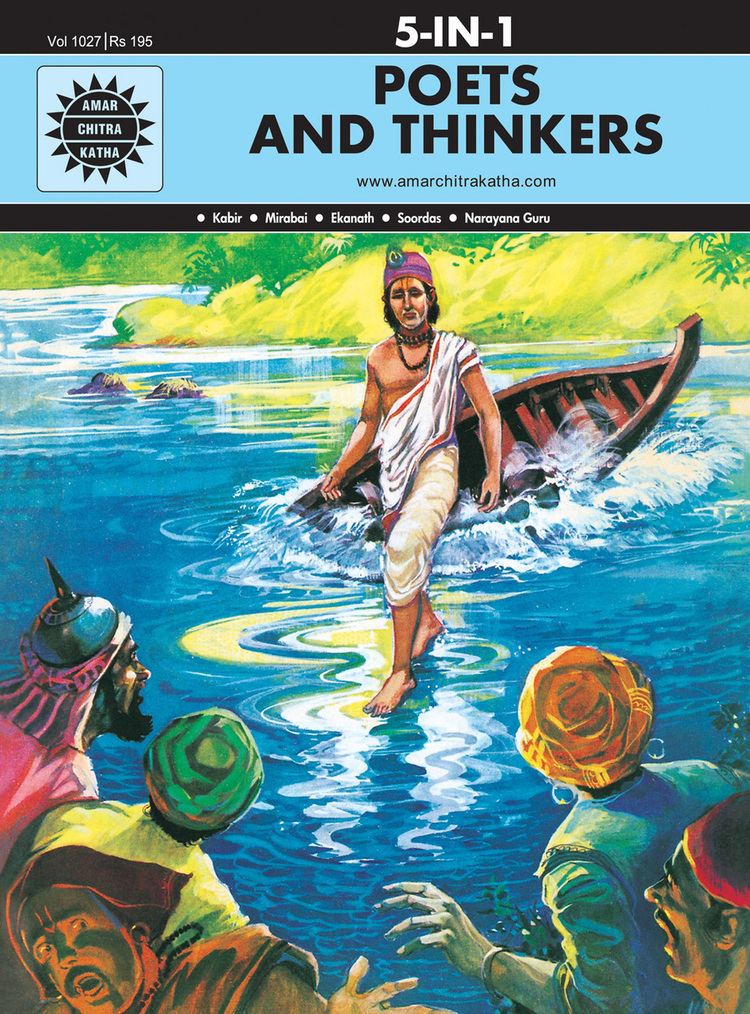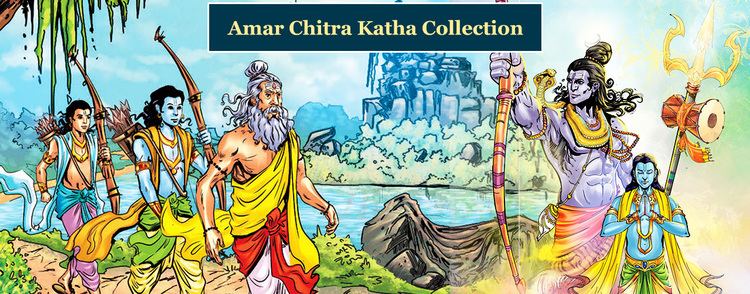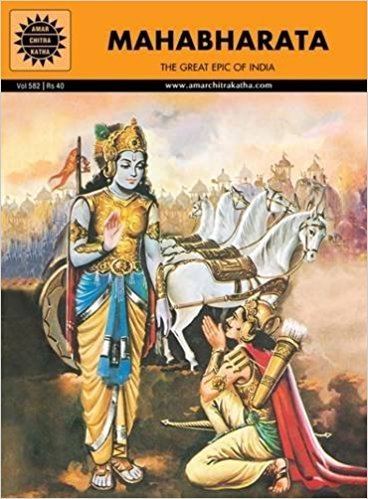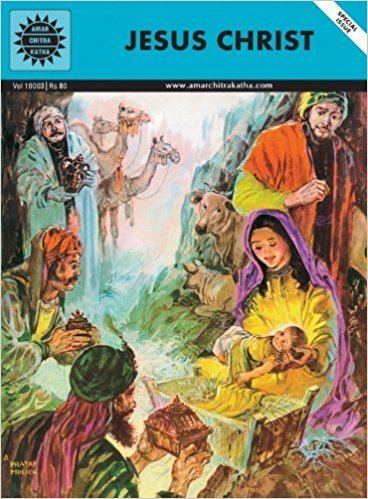Number of issues 449 Artist(s) Various | Writer(s) Various | |
Publisher Amar Chitra Katha Pvt. Ltd. Similar | ||
Amar chitra katha book collection
Amar Chitra Katha ("Immortal Captivating (or Picture) Stories") is one of India's largest selling comic book series, with more than 90 million copies sold in 20 Indian languages. Founded in 1967, the imprint has more than 400 titles that retell stories from the great Indian epics, mythology, history, folklore, and fables in a comic book format. It was created by Anant Pai, and published by India Book House. In 2007, the imprint and all its titles were acquired by a new venture called ACK Media. On 17 September 2008, a new website by ACK-media was launched.
Contents
- Amar chitra katha book collection
- Amar chitra katha s tribute to heroes first ever comic on indian soldiers
- Creation and creators
- The comics
- Modernisation
- Criticism
- References

Amar chitra katha s tribute to heroes first ever comic on indian soldiers
Creation and creators
The comic series was started by Anant Pai in an attempt to teach Indian children about their cultural heritage. He was shocked that Indian students could answer questions on Greek and Roman mythology, but were ignorant of their own history, mythology and folklore. It so happened that a quiz contest aired on Doordarshan in February 1967, in which participants could easily answer questions pertaining to Greek mythology, but were unable to reply to the question "In the Ramayana, who was Rama's mother?".
The above is an oft-told story of how ACK was founded beginning with 'Uncle Pai', in Mumbai in 1967. However, Outlook Magazine has this article about the genesis of this popular comic series: The idea and proposal for Amar Chitra Katha was made by a Bangalore book salesman called G.K. Ananthram which led to the first Amar Chitra Katha comics being produced in 1965—in Kannada, not English. "The English ACK titles begin from number eleven because the first ten were in Kannada," clarifies Ananthram. To Anathram's satisfaction, the 1965 Kannada ACK venture was a great commercial success which led to Mirchandani in the head office in Mumbai pursuing the Amar Chitra Katha idea in English diligently. "They brought in Anant Pai" says Ananthram. "And he built a wonderful team and a great brand."

Writers like Kamala Chandrakant, Margie Sastry, Subba Rao, Debrani Mitra and C.R Sharma joined the creative team of Amar Chitra Katha, with Anant Pai taking on the role of editor and co-writer on most scripts. The notable illustrators were Ram Waeerkar, who illustrated the very first issue of Amar Chitra Katha, Krishna, Dilip Kadam, C. M. Vitankar, Sanjeev Waeerkar, Souren Roy, C.D Rane, Ashok Dongre, V.B. Halbe, Jeffrey Fowler, Pratap Mullick and Yusuf Lien aka Yusuf Bangalorewala.
The comics

The original printings of amar Chitra were not in full colour—because of budgetary constraints, the panels were printed using yellow, blue and green. Subsequent issues, however, changed to full colour. All Amar Chitra Katha books stuck to a monthly (later fortnightly) 30-page format, with emphasis on lucid, entertaining storylines. In addition to the 'singles' format the stories are also available as hardcover 3-in-1 and 5-in-1 bundles. There are special editions of the epics like the Mahabharata which is available in a 3 volume 1300+ pages set.

Occasionally there were "bumper" issues with 90 pages, most collecting stories of a similar type from individual issues (e.g. Monkey Stories From The Hitopadesha, Tales of Birbal and some being longer stories The Story of Rama). As the epic stories became more popular, the team began to publish stories based on Indian history, of men and women belonging to different regions and religions and also on stories based on Sanskrit as well as regional classics. The continuous popularity of the comics led to reprints being issued frequently, which ensured that the back-issues remained in print throughout the seventies and the eighties. At the height of its popularity, in the mid-eighties, it had been translated into Bengali, Marathi, Assamese, Gujarati, Punjabi, Sanskrit, Telugu, Tamil and Urdu and selling half a million copies a month. Some titles were also translated into French, Spanish, German, Swahili, Fijian, Indonesian, and Serbo-Croat.

Towards the mid-nineties, the original comics were reprinted in sleeker and more durable editions, with thick cardstock covers and better colour separations. Today, Amar Chitra Katha has a national footprint across all major book retailers, hundreds of small bookstores, and tens of thousands of vendors. It is the best-selling children's publication in most large format stores.

In 2007, the publisher created a new online store that offers all the titles with shipping worldwide. The titles are divided in following categories
- Fables & Folktales (e.g. Panchatantra)
- Mythology (e.g. The Ramayana)
- The Epics (e.g. The Mahabharata)
- Humour & wit (e.g. Birbal)
- Biographies (e.g. Mahatma Gandhi)
- Literary Classics
- 3 in 1 Titles
- 5 in 1 Titles
- Special Issues
Modernisation
Amar Chitra Katha has evolved over times. It has forayed into the digital world by launching its official digital store app across platforms — Windows 8, iOS and Android. Dubbed as ACK Comics, the store offers more than 300 titles. The free app gives readers access to Amar Chitra Katha comics, ranging from its archive but also including the latest books that Amar Chitra Katha publishes, with both free and paid comics. The digital comics can be read in the app in flip-book mode as well as panel-by-panel mode, which is convenient for smaller devices. Users can download and read their comics on multiple devices using a single user account.
The app has been developed by App9 Digital Studio, the digital division of Ninestars Information Technologies Pvt. Ltd.
Criticism
According to book critic Nilanjana Roy, the Amar Chitra Katha series reflects 'the stereotypes and prejudices of modern mainstream Indian culture; pink-skinned, fair heroes and heroines, dark asuras and villains, passive women drawn as in Indian calendar art from the male perspective'. However, dark skinned heroes like Ram, Krishna are among the most prominent titles covered in Amar Chitra Katha.
Criticism of the Amar Chitra Katha comics has largely revolved around two central issues: the depiction of women and the portrayal of minorites, according to author Aruna Rao. The female characters have been criticised as stereotypical, often shown to be self-sacrificing and passive in comparison to the men. Practices of sati and jauhar have been depicted without appropriate contextualisation or comment. The Muslim heroes are invariably those who accommodated Hinduism in their belief systems, while Orthodox Muslims are presented as villains. The creators have also been criticised for projecting the superiority of Brahminical or upper-caste Hindu culture over other viewpoints, presenting Indian caste hierarchies uncritically. However, Aruna Rao points out that India Book House responded to some of the criticism about the depiction of women and minorities, and attempted to make amends by adopting a broader perspective.
The stories have often been criticised as distorted depictions of history, with characters being seen simplistically as 'good' and 'bad' – brave Hindu kings and Muslim 'outsiders', and so on. Also, the aim is often to create a hagiography and a lesson in character-building at the expense of authenticity and historical truth. Another criticism is that comic books, by their very nature, do not reflect the richness and complexity of the oral tradition of Indian mythology in which multiple versions of a story can co-exist simultaneously. One mainstream version is privileged over regional and folk versions, which the younger audience then comes to accept as the only 'truthful' version.
